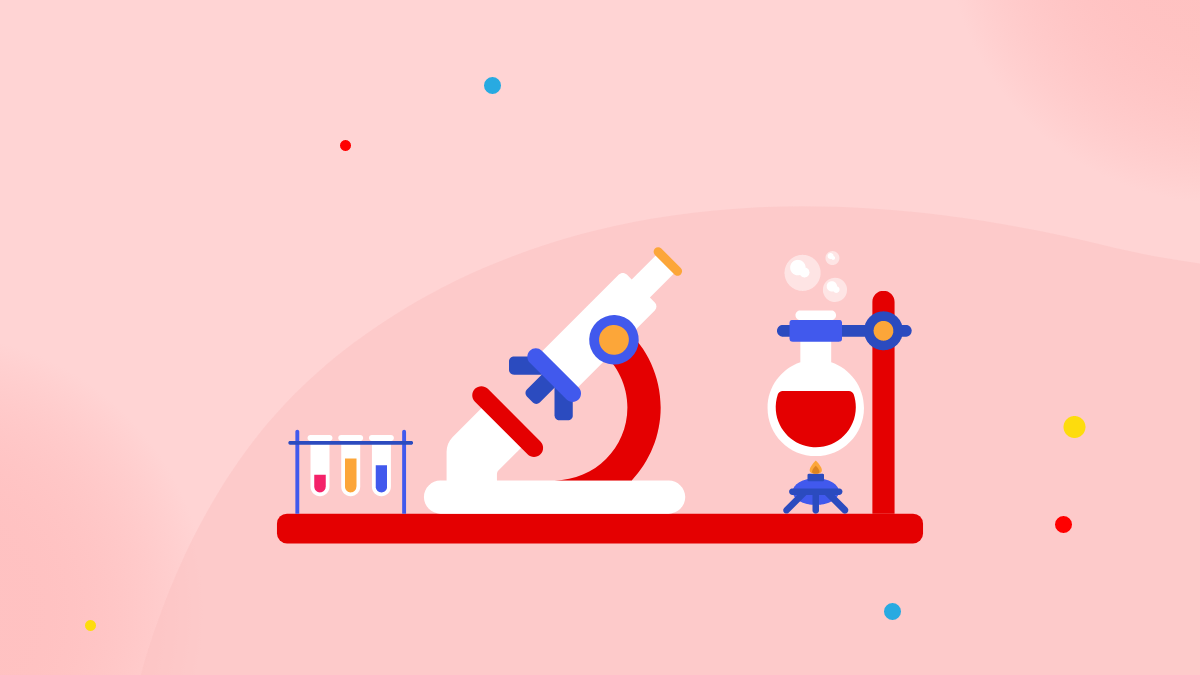 Introduction: The Innovation Paradox
Introduction: The Innovation Paradox
Research and development is the heartbeat of progress. Whether it’s developing a life-saving drug, pioneering new materials, or building next-generation technology, R&D teams are responsible for turning complex ideas into impactful solutions. Across industries, these teams are tasked with delivering innovation under increasing pressure — tighter timelines, stricter regulations, and growing competition.
But here’s the paradox. The same teams expected to innovate are often slowed down by outdated, manual processes. Task handoffs via email, scattered documentation, unclear approvals, and endless meetings consume valuable time. Scientists, engineers, and project leads spend too much energy managing work instead of doing it.
That’s where Planally steps in. As a no-code workflow automation platform, Planally transforms rigid, fragmented R&D processes into streamlined, collaborative, and insight-driven systems. With features like phase-gate workflows and fit-for-purpose roadmaps, Planally helps teams move faster, stay aligned, and make better decisions — turning operational bottlenecks into momentum for breakthroughs.
Drive smarter, faster R&D with Planally
The R&D Challenge Across Industries
Innovation doesn’t happen in a straight line. It moves through stages of discovery, testing, validation, and iteration — and each stage brings its own set of complexities. Across industries, R&D teams struggle with a common set of issues that block progress.
Manual tasks are a major time sink. From data entry to document routing, these repetitive steps drain productivity and open the door to errors. Communication is often siloed, with researchers, engineers, and product managers working in parallel but disconnected systems. Without a single source of truth, alignment suffers and key decisions get delayed.
Lack of visibility is another recurring challenge. Leaders can’t easily track project status, identify bottlenecks, or reallocate resources proactively. Teams operate in reactive mode, which slows everything down.
These problems aren’t industry-specific. Pharmaceutical firms juggle regulatory hurdles and long trial cycles. Chemical companies must maintain rigorous quality control while driving product innovation. In tech and materials science, rapid iteration is critical, but disconnected workflows block agility.
The real cost of inefficiency is time — time lost to admin, to miscommunication, to rework. And in R&D, time often determines who gets to market first. For organizations that live and die by their ability to innovate, streamlining workflows isn’t a nice-to-have. It’s a competitive necessity.
How Planally Powers Breakthroughs
1. Workflow Automation Without Code
Planally gives R&D teams the ability to digitalize and standardize every workflow without writing a single line of code. From idea generation to experimental validation, teams can build processes that mirror how they actually work. The platform supports task tracking, milestone approvals, and structured data capture — turning once-manual steps into efficient, automated flows.
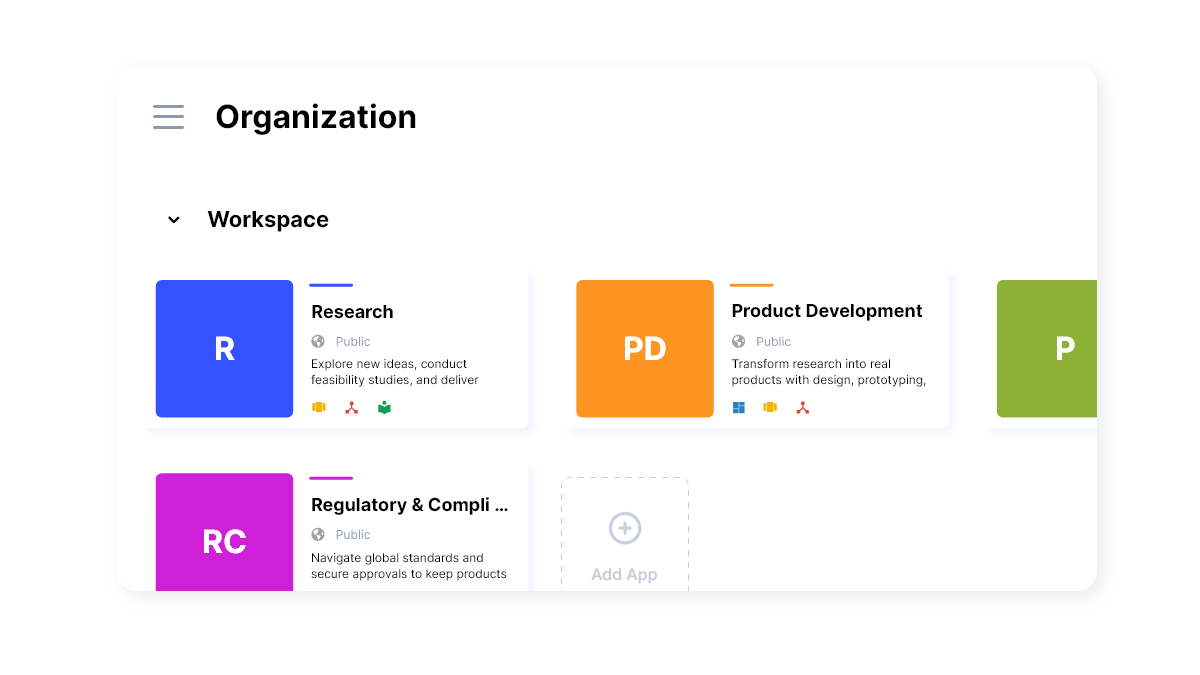 Automation helps remove time-consuming administrative layers that slow progress. By eliminating repetitive tasks and reducing the risk of human error, researchers are freed to focus on experimentation, analysis, and problem-solving. Planally transforms day-to-day R&D management from a patchwork of manual actions into a streamlined system built for speed and accuracy.
Automation helps remove time-consuming administrative layers that slow progress. By eliminating repetitive tasks and reducing the risk of human error, researchers are freed to focus on experimentation, analysis, and problem-solving. Planally transforms day-to-day R&D management from a patchwork of manual actions into a streamlined system built for speed and accuracy.
2. Unified Collaboration Across Functions
Planally serves as a centralized platform where R&D teams, product leaders, compliance officers, and external collaborators can work together in real time. The platform brings communication, documentation, and task management into a single view. This removes the confusion caused by scattered files, multiple email threads, or outdated spreadsheets.
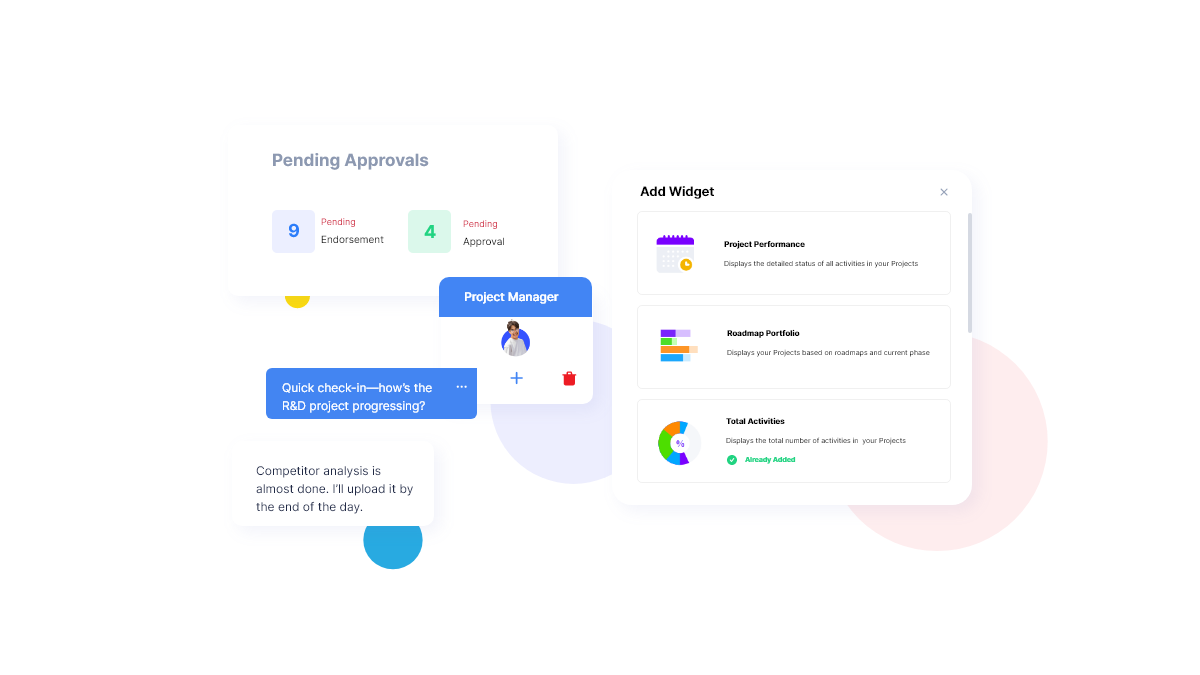 Real-time updates ensure that progress is always visible. Teams can assign clear ownership, share documents instantly, and coordinate deliverables without disruption. Whether a researcher is working in the lab or a product manager is reviewing timelines remotely, everyone stays aligned on priorities and expectations.
Real-time updates ensure that progress is always visible. Teams can assign clear ownership, share documents instantly, and coordinate deliverables without disruption. Whether a researcher is working in the lab or a product manager is reviewing timelines remotely, everyone stays aligned on priorities and expectations.
3. Real-Time Progress and Accountability
Planally’s phase-gated workflow engine gives teams full visibility into every stage of the R&D lifecycle. Each project is structured into defined phases, with clear entry and exit criteria. This makes it easier to monitor timelines, flag risks early, and ensure compliance with internal standards or regulatory requirements.
Built-in dashboards deliver up-to-date insights into project status, pending approvals, and upcoming deadlines. Managers can assign responsibilities clearly and hold teams accountable without chasing updates. The result is a more transparent, predictable, and productive research environment.
4. Strategic Advantage with Phase-Gate Workflows
The phase-gate approach is a proven framework for managing complex innovation. Planally integrates this methodology into its core, allowing teams to move projects through clearly defined stages—such as discovery, feasibility, development, validation, and launch. Each phase ends with a gate, where stakeholders assess progress, address risks, and decide on next steps.
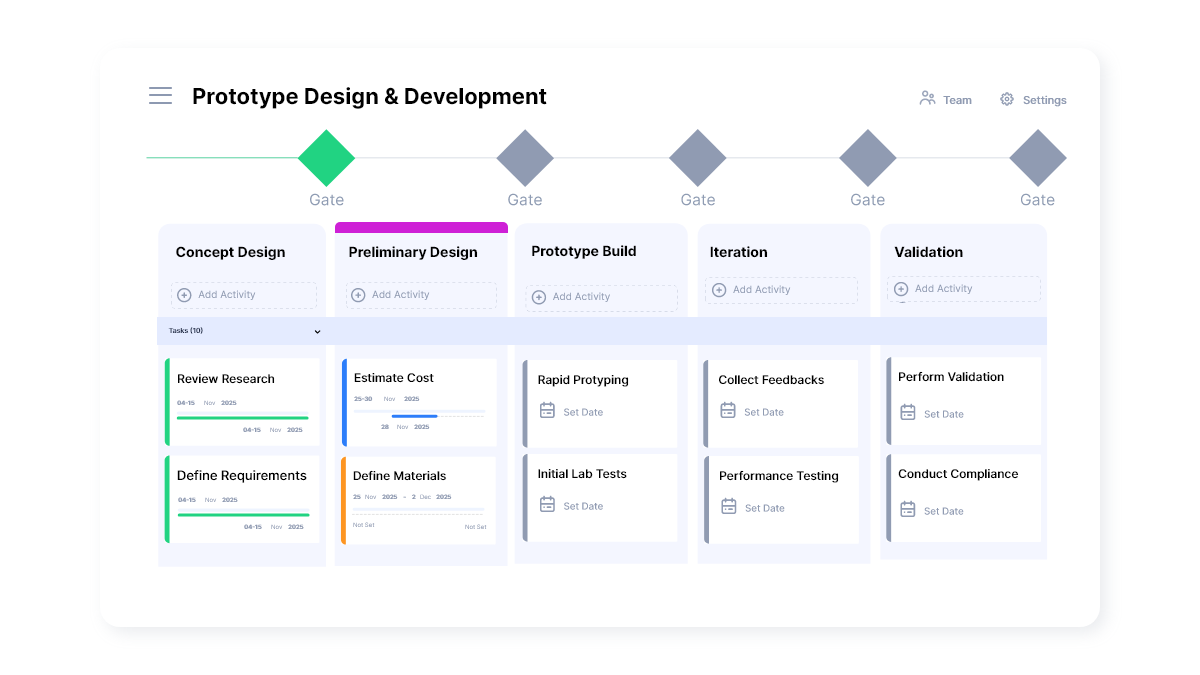 This structure gives R&D leaders the ability to plan predictable cycles while adapting to new insights as they emerge. Risks are addressed at the right moments, rather than at the finish line. The gate reviews encourage teams to pause, reflect, and make decisions with full visibility.
This structure gives R&D leaders the ability to plan predictable cycles while adapting to new insights as they emerge. Risks are addressed at the right moments, rather than at the finish line. The gate reviews encourage teams to pause, reflect, and make decisions with full visibility.
By aligning all contributors—scientists, engineers, marketers, and executives—at every phase, Planally ensures shared understanding and accountability. This alignment reduces rework, accelerates progress, and improves the quality of outcomes. For innovation to succeed, structure and flexibility must go hand in hand. Planally delivers both through phase-gate workflows built for modern R&D.
5. Fit-for-Purpose Roadmaps: Precision Meets Agility
In R&D, no two projects follow the same path. That’s why Planally’s fit-for-purpose roadmaps are designed to adapt to your goals rather than force your team into a rigid template. These roadmaps align each milestone with specific research objectives, giving your team a clear, purpose-built path from concept to outcome.
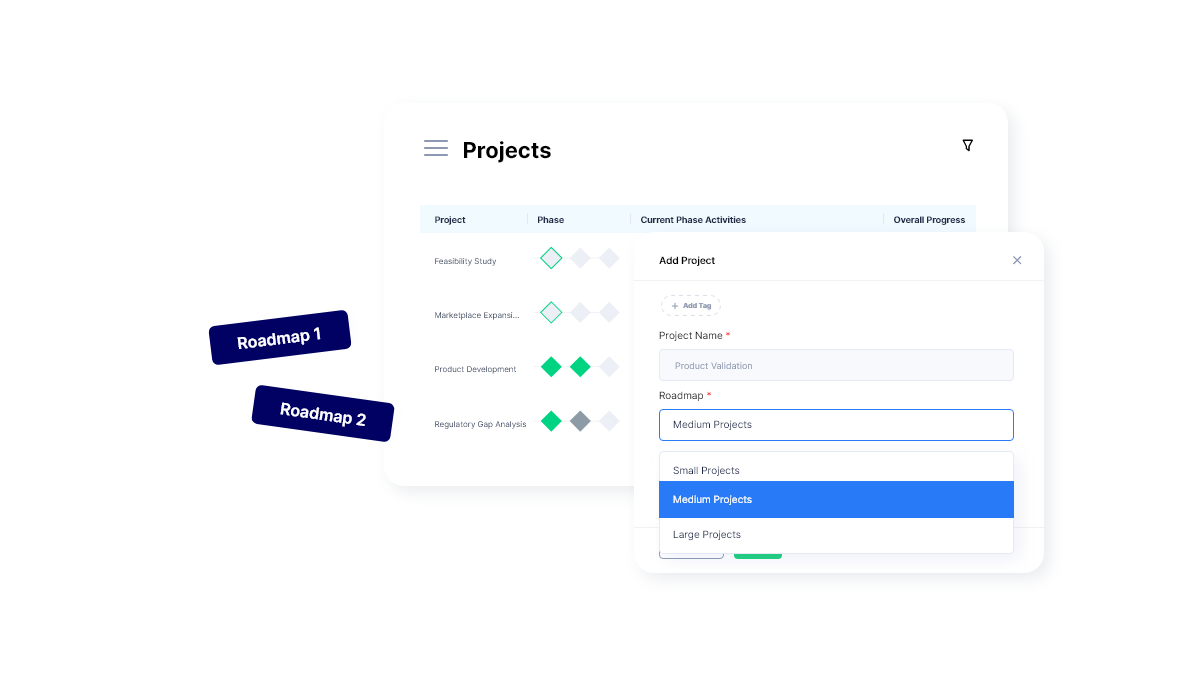 With real-time flexibility, teams can adjust roadmaps based on new data, experimental results, or shifts in market demand. Whether a breakthrough discovery changes the scope of work or external factors require a redirection, Planally helps teams pivot with speed and confidence.
With real-time flexibility, teams can adjust roadmaps based on new data, experimental results, or shifts in market demand. Whether a breakthrough discovery changes the scope of work or external factors require a redirection, Planally helps teams pivot with speed and confidence.
Planally roadmaps are also powerful visual communication tools. They turn complex workflows into a shared visual language that cuts across departments, disciplines, and locations. This makes it easier for cross-functional stakeholders to stay aligned, understand timelines, and prioritize tasks without confusion or delays.
6. Customization That Scales With You
Every R&D team operates differently. Planally gives you the ability to build workflows that mirror how your team actually works, not how a tool assumes you should. From data collection forms to approval processes, everything is customizable—no coding required.
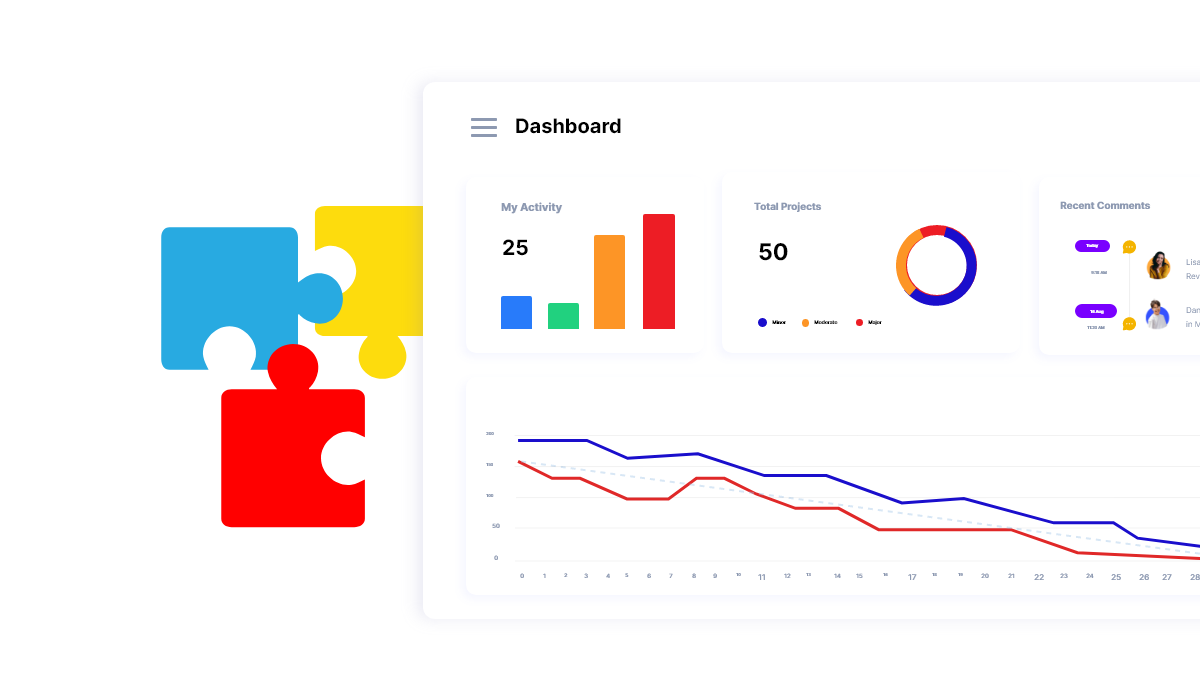 This adaptability makes Planally a natural fit for R&D teams across verticals, including pharmaceuticals, chemicals, technology, and materials science. Whether your work revolves around clinical trials, formulation development, prototype testing, or compliance reporting, Planally molds to your methods.
This adaptability makes Planally a natural fit for R&D teams across verticals, including pharmaceuticals, chemicals, technology, and materials science. Whether your work revolves around clinical trials, formulation development, prototype testing, or compliance reporting, Planally molds to your methods.
As your organization grows, so does Planally. The platform scales effortlessly from small, agile research units to enterprise-grade R&D ecosystems with hundreds of users. No matter the size of your team or the complexity of your project portfolio, Planally provides the structure and flexibility needed to keep innovation moving forward.
7. Measurable Impact Across Verticals
The challenges R&D teams face are rarely industry-specific. Whether working on next-generation materials or clinical breakthroughs, the pressure to innovate faster, with greater accuracy and collaboration, is universal. Planally’s no-code workflow automation platform offers a measurable advantage across all sectors by cutting through complexity and unlocking real-time efficiency.
 Pharmaceuticals: Accelerating Discovery and Ensuring Compliance
Pharmaceuticals: Accelerating Discovery and Ensuring Compliance
In pharmaceutical research, timelines can span years and compliance is non-negotiable. Planally automates documentation, task routing, and approval processes to ensure consistent, audit-ready workflows. Drug discovery projects benefit from structured phase-gate tracking, reducing delays caused by manual handoffs. Teams can easily standardize research protocols, automate cross-functional reviews, and stay aligned from lab to launch.
Chemicals: Streamlined Formulations and Smarter Quality Control
Chemical R&D requires rigorous formulation cycles and quality testing at every phase. Planally brings structure to complex processes like formulation development and QA/QC. Teams can create customizable workflows that map precisely to lab protocols, ensure version control for formulations, and track every phase of development with real-time data visibility.
Materials Science: Precision in Testing and Innovation Cycles
From synthetic polymers to advanced composites, materials science demands speed without sacrificing accuracy. Planally enables teams to manage iterative testing workflows, automate data capture, and enforce quality thresholds at every phase. Fit-for-purpose roadmaps make it easier to adapt to experimental results while keeping innovation cycles moving forward.
Technology and Hardware: Fast-Tracking Prototypes to Product
In tech and hardware development, the speed of iteration often defines competitive advantage. Planally supports agile R&D by providing a flexible framework for prototyping, user testing, and feature validation. Teams can move from ideation to implementation without getting bogged down in task ambiguity or fragmented communication. With real-time dashboards, stakeholders gain instant clarity on project status and technical milestones.
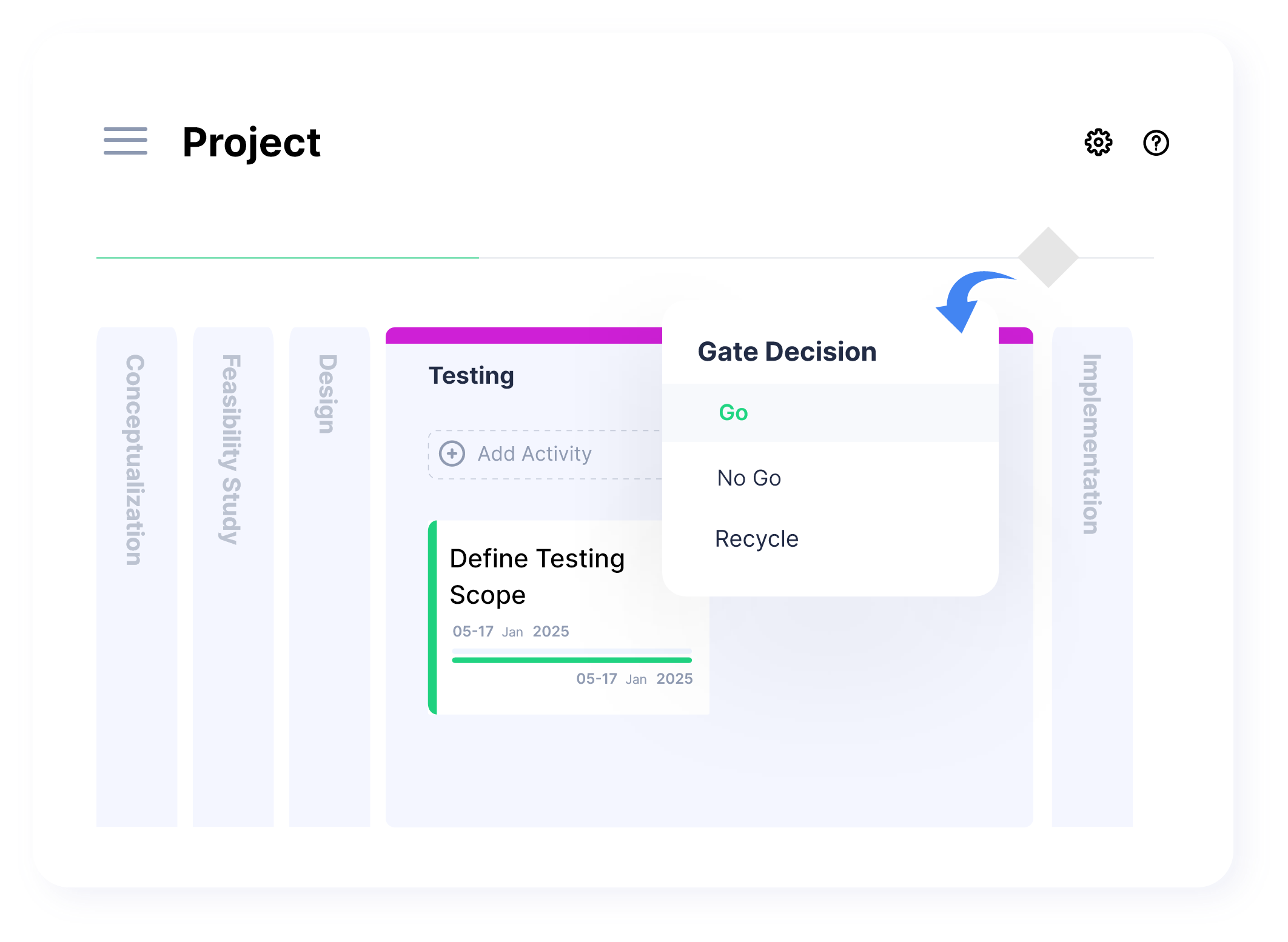 Why Planally Is Built for R&D Teams
Why Planally Is Built for R&D Teams
Planally was built with the realities of R&D in mind. It doesn’t just digitalize processes. It transforms how teams operate, communicate, and deliver outcomes. The platform addresses the daily friction points that slow innovation and replaces them with structure, clarity, and speed.
Less Admin, More Innovation
Automated workflows eliminate redundant steps and minimize manual input. Researchers can spend more time on experiments and analysis, and less time updating spreadsheets or chasing approvals.
Better Collaboration and Transparency
Planally centralizes tasks, communications, and data into a single view. Everyone—from researchers and project leads to compliance officers—can access the same information, stay updated in real time, and collaborate without silos.
Fast, Informed Decision-Making
Integrated dashboards provide immediate visibility into progress, deadlines, and resource allocation. With built-in approvals and phase-gate reviews, leaders can make quick, confident decisions backed by data.
Higher Success Rates from Idea to Product
When workflows are clear, accountability is embedded, and insights are always available, projects run more smoothly. Planally ensures that every phase of development is aligned with strategic goals, giving R&D teams the tools they need to bring more ideas across the finish line.
The Bottom Line: Accelerate Innovation with Confidence
Innovation doesn’t wait, and neither should your R&D workflows. When research teams are bogged down by disconnected systems, repetitive tasks, and unclear progress tracking, breakthrough ideas get buried under busywork. That’s where Planally makes the difference.
By bringing all your research, collaboration, approvals, and timelines into one no-code platform, Planally turns fragmented efforts into focused momentum. Every task, phase, and milestone lives in a unified space, making it easier to track progress, eliminate bottlenecks, and empower your team to move faster with clarity and purpose.
No more chasing updates across spreadsheets or waiting on manual approvals. With Planally, R&D teams gain the structure and flexibility they need to reduce development cycles, improve data quality, and stay aligned across functions. The result? More time spent on innovation, less time lost in process friction.
Explore How Planally Can Power Your Next Breakthrough
Your next big idea deserves more than outdated workflows. Whether you’re leading a single R&D team or managing global research initiatives, Planally is built to adapt to your environment and accelerate your results.
See how Planally’s phase-gate structure, fit-for-purpose roadmaps, and real-time collaboration features help innovation teams across pharmaceuticals, chemicals, tech, and materials science move from concept to commercialization faster.
👉 Book a personalized demo today
Easy to deploy, effortless to use, and powerful enough for the most complex R&D workflows—Planally is ready when your team is.
No-code platform to automate any workflow
Frequently Asked Questions
How does Planally improve workflow efficiency in R&D teams?
Planally eliminates time-consuming manual tasks through no-code automation, helping R&D teams streamline complex workflows. By digitalizing approvals, standardizing task handoffs, and centralizing documentation, teams can focus more on innovation and less on admin work.
What is a phase-gate workflow and how does Planally use it?
A phase-gate workflow divides R&D projects into structured stages—like discovery, testing, and validation—with review gates between each. Planally embeds this framework into its platform, enabling teams to manage progress, assess risks, and make data-driven decisions at every phase.
Can Planally be customized for different industries like pharma or materials science?
Yes, Planally offers fully customizable workflows tailored to industry-specific needs. From pharmaceutical compliance to iterative materials testing, the platform adapts to each team’s protocols and scales effortlessly across sectors.
How does Planally support collaboration in cross-functional R&D environments?
Planally unifies all stakeholders—researchers, engineers, compliance officers—on a single platform. With real-time updates, centralized communication, and shared documentation, teams stay aligned and avoid confusion caused by fragmented systems.
Is Planally suitable for both small research units and large enterprise R&D operations?
Absolutely. Planally scales from agile research teams to enterprise-level ecosystems. Whether you have 5 users or 500, the platform provides structure, visibility, and flexibility without requiring coding expertise.



